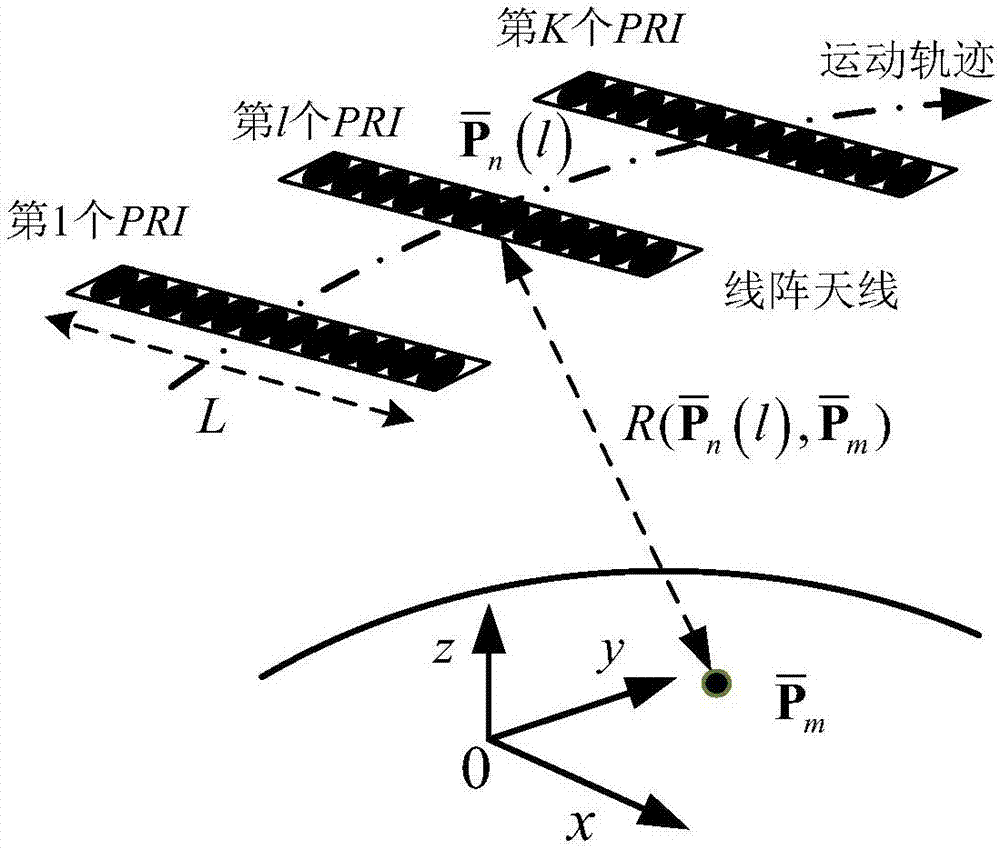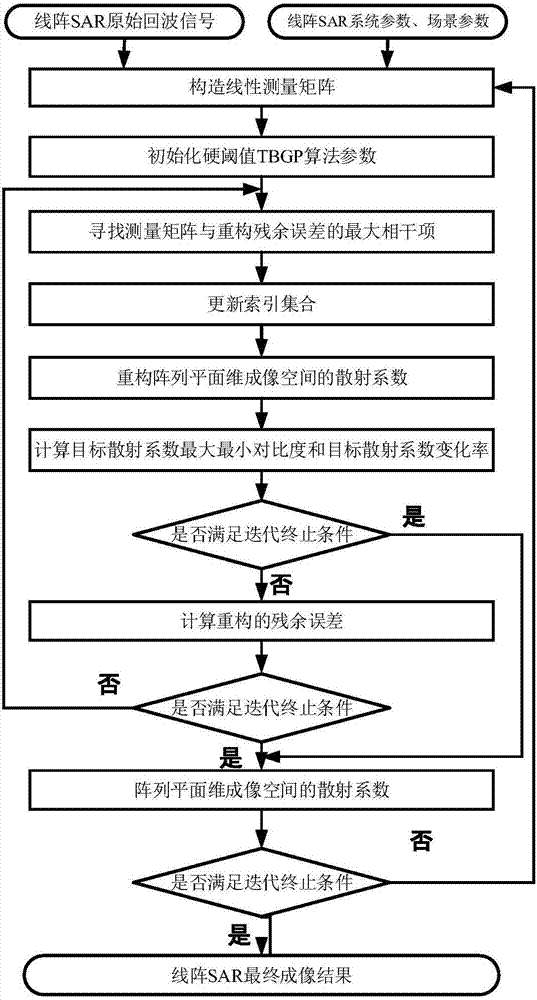Linear array SAR (Synthetic Aperture Radar) three-dimensional imaging method based on threshold gradient tracking algorithm
A linear array and threshold technology, used in radio wave measurement systems, radio wave reflection/re-radiation, utilization of re-radiation, etc., can solve the problems of increase, cost increase, and high cost
- Summary
- Abstract
- Description
- Claims
- Application Information
AI Technical Summary
Problems solved by technology
Method used
Image
Examples
Embodiment Construction
[0086] The present invention mainly adopts the method of simulation experiment to verify, and all steps and conclusions are verified on MATLABR2008b. The specific implementation steps are as follows:
[0087] Step 1. Initialize the linear array SAR system parameters required for simulation:
[0088] Initialize the values of the linear array SAR system parameters such as image 3 shown, including: motion platform velocity vector The total number of array elements of the linear array antenna N=201, the initial position vector of each array element of the linear array antenna Where n is the array element number of the nth linear array antenna, n=1,2,...,N, N=201, the length of the linear array antenna is L=3m, and the distance between adjacent array elements of the linear array antenna is d= 0.015m, radar center frequency f c =10GHz, the signal width B of the baseband signal of the radar transmitter r =300MHz, radar transmit signal pulse width T P =10 -6 s, frequency m...
PUM
 Login to View More
Login to View More Abstract
Description
Claims
Application Information
 Login to View More
Login to View More - R&D
- Intellectual Property
- Life Sciences
- Materials
- Tech Scout
- Unparalleled Data Quality
- Higher Quality Content
- 60% Fewer Hallucinations
Browse by: Latest US Patents, China's latest patents, Technical Efficacy Thesaurus, Application Domain, Technology Topic, Popular Technical Reports.
© 2025 PatSnap. All rights reserved.Legal|Privacy policy|Modern Slavery Act Transparency Statement|Sitemap|About US| Contact US: help@patsnap.com



